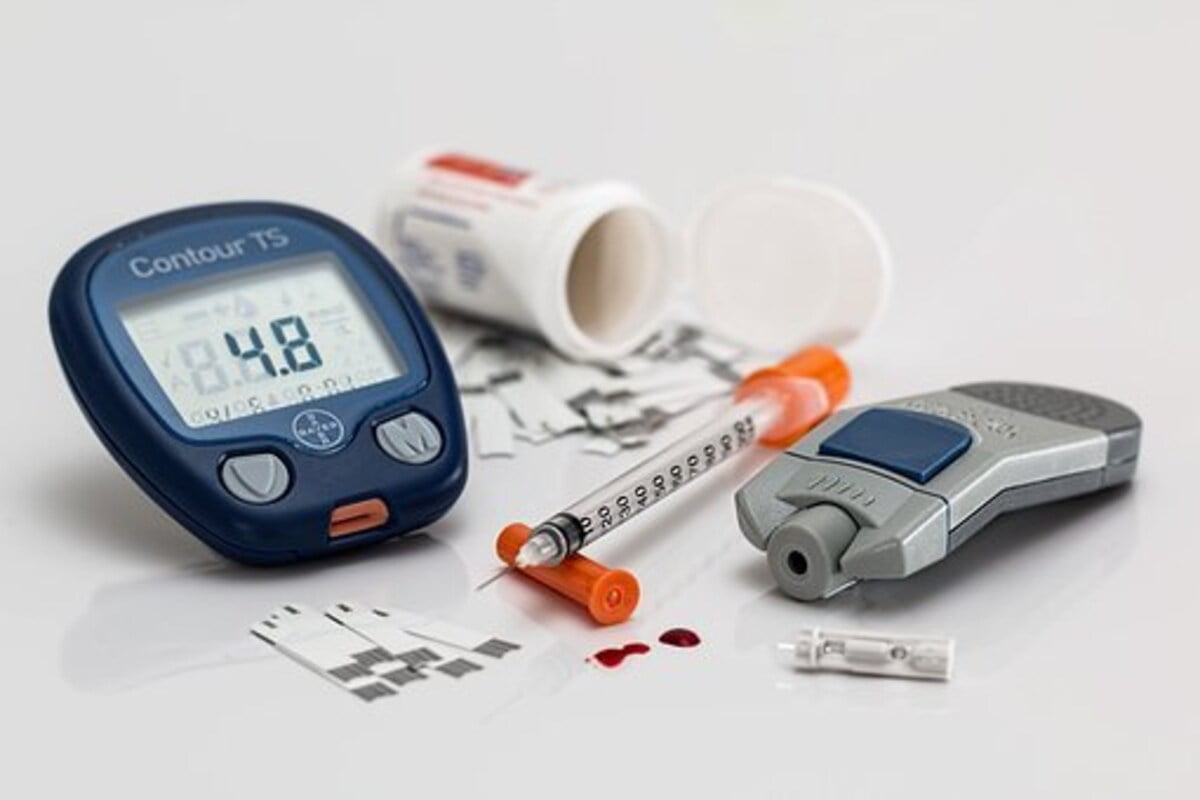To better understand the difference between diabetes mellitus and diabetes insipidus, let’s break each of them down and understand their fundamentals.
Table of Contents
Diabetes Mellitus
There are two main types of diabetes mellitus, type 1 and type 2. Type 1, formerly called insulin-dependent diabetes, is usually diagnosed in children, teens, or young adults. It is generally caused by an autoimmune reaction, where the body’s immune system attacks and destroys the pancreatic cells that produce insulin. Insulin is a hormone that helps the body regulate blood sugar levels. Without insulin, blood sugar levels can become dangerously high.
Type 2, formerly called adult-onset or noninsulin-dependent diabetes, usually begins after age 35 but can occur in younger people if they are overweight or have certain genetic risk factors. In Type 2 diabetes, either the body doesn’t produce enough insulin or cells are resistant to the effects of insulin. Diabetes is caused by a combination of genetic and lifestyle factors. When this happens, too much glucose stays in the blood, which, over time, can cause severe problems with your heart, eyes, kidneys, nerves, gums, and teeth.
Diabetes Insipidus
Understanding diabetes insipidus is critical for understanding the difference between diabetes mellitus and diabetes insipidus. Unlike diabetes mellitus, which is caused by a lack of insulin, diabetes insipidus is caused by a lack of proper functioning in the pituitary gland.
The pituitary gland is located at the base of the brain and produces a hormone called vasopressin that helps the body regulate fluid levels. Without vasopressin, the body cannot correctly retain water, leading to excessive urination and thirst.
Diabetes insipidus can be caused by head injury, a brain tumour, and kidney disease. Autoimmune disorders such as sarcoidosis and histiocytosis can damage the pituitary gland and lead to diabetes insipidus.
Symptoms of diabetes mellitus
Diabetes mellitus is when the pancreas fails to produce enough insulin to break down the glucose in your bloodstream. Nursing diagnosis for diabetes mellitus and timely medical intervention is based on understanding the symptoms of diabetes mellitus. Some symptoms include excessive thirst and weight loss, hunger, and fatigue. The body demands a lot of water due to high sugar levels in your blood. You might also experience dizziness or blurred vision because of the excess glucose level in your body. Diabetes mellitus can also cause serious health problems if left untreated, such as heart disease, stroke, kidney failure, and nerve damage.
Symptoms of diabetes insipidus
Understanding unique symptoms is key to understanding the difference between diabetes mellitus and diabetes insipidus. A critical symptom that helps distinguish diabetes insipidus from diabetes mellitus is the increased frequency of urination. People with diabetes insipidus will urinate much more frequently than those with diabetes mellitus, and often in much more significant amounts. This can lead to dehydration and other problems related to it.
Increased thirst is a symptom shared between diabetes mellitus and insipidus. People with both types of diabetes will often feel very thirsty, even after drinking large amounts of fluids.
Treatment for diabetes mellitus
The best approach and nursing diagnosis for diabetes mellitus depend on many factors, including the type of diabetes, the severity of the condition, and the individual’s preferences and lifestyle.
That said, some general principles can help guide treatment decisions. In general, treatment for diabetes mellitus focuses on managing blood sugar levels through diet, exercise, and medication.
Diet is a critical part of managing diabetes. People with diabetes must eat regular meals and snacks throughout the day to control their blood sugar levels. What and how much you eat can significantly impact your blood sugar levels. Therefore, working with a Registered Dietitian or Certified Diabetes Educator is essential to develop a meal plan that works for you.
Exercise is also an essential component of managing diabetes. Exercise helps to lower blood sugar levels by helping the body to use insulin more effectively. It also has many other benefits, including improving heart health and mental well-being.
Treatment for diabetes insipidus
The treatment approach for diabetes insipidus could differ for each person, as various factors cause the condition. Treatment will vary depending on the underlying cause of the condition. Sometimes, no treatment is necessary, as the condition may resolve independently. For example, if the condition is mild, the doctor may only recommend you increase your water intake. The doctor might consider synthetic hormone treatment if the condition is due to damage to the pituitary gland by prescribing a synthetic hormone called desmopressin.
To sum up what we know.
The nursing diagnosis for diabetes mellitus and diabetes insipidus and the various prescribed treatments broadly vary, depending on factors like age and underlying conditions. If you or someone in your family is showing diabetes symptoms, it is best to seek medical attention as soon as possible to avoid complications.
Read also: Ponds White Beauty BB Cream Review




